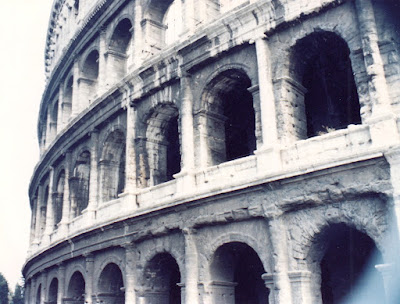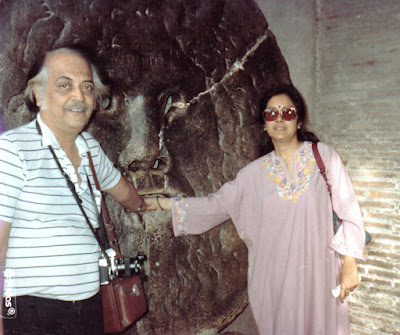 |
| Taj ul Masajid in Old Bhopal |
It has been some time since Bhopal made it to the list of twenty cities that are going to be converted in the first phase into “Smart City”. That the city barely made it to the list being ranked twentieth says much about its present condition. I read somewhere that the entry about availability of land in the city clinched the decision in its favour.
That it was not vacant land that was available probably was not communicated. What was meant was actually redevelopment of two areas of the newer part of the city – Shivaji Nagar and Tulsi Nagar. Both have around 50-year old government low rise structures which, according to the government, are occupying precious government land and it was felt necessary to unlock its value by recapitalizing it. Both the areas are situated close to two business hubs – the New Market and Maharana Pratap Nagar (Zones 1 and 2) as also the up-and-coming Central Business District being built by the infrastructure giant Gammon India Ltd. Gammon India has already half built the business and high rise residential complexes. The idea seems to be to have a longish belt of residential and commercial high-rise high end complexes right up to the junction with Maharana Pratap Nagar.
The proposal was well taken. Probably, the builders were eying the area for long and, reportedly, something was in the works on the pretext of re-densification. The Smart City dispensation was a God-sent and the state government latched on to it, driven most of them, as they are, by the builders’ lobby. Whatever might be the truth, there have been only feeble protests by the adversely affected residents of the colonies of the two Nagars. Much stronger protests by the residents of what was then known as South TT Nagar heralded the Gammon Project. But this time it was much muted. The inhabitants of these two colonies will be uprooted from their moorings where most of them have spent close to thirty-odd years, and, what is more, there is no plan for their resettlement in sight. That is an acute human problem the resolution of which is not yet in sight. Resettlement and rehabilitation of displaced people are not the strong points of this government.
Another point that seems to have failed to come up of consideration is the consequence on traffic that would be generated by the belt of high-rise commercial, office and residential complexes. The Link Road No. 1 would be practically jammed, at least one of its carriageways. With great the Bhopal Citizen Forum prevailed upon the planners to provide openings from Gammon India's CBD on the road to tin Shade. Commuting through the Link Road will be problematic once the Smart City comes up.
More importantly, what is worrying is that as many as 30000 trees are going to be felled. I had mentioned earlier that 3000 trees were felled for the BRTS project and Gammon India felled another 3000. Compensatory re-plantation in these areas has not taken place. Felling 30000 more is going to have a telling impact on the climate of the city. Shivaji Nagar and Tulsi Nagar are perhaps the greenest areas of the city with dense growth of trees, many parks and ponds. It is an ecologically rich area and sacrificing all that for something that may or may not come up even in the next thirty years seems to be travesty of reason. It is likely to play merry hell with the environment which already has taken a hit from climate change induced by global warming.. When the weather is playing highly fickle and nobody knows what kind of turn it takes in the next few days sacrificing trees in thousands in a city would seem to be crime against its citizens. Reports have already appeared of Bhopal registering high temperatures throughout 2015. One, therefore, feels a little sad that there have been no protests against this decision of the government by any of the civil society groups or environmentalists barring, perhaps, the Bhopal Citizens’ Forum.
The government and builders, taken together, are very quick in felling trees but excruciatingly tardy in compensating for the lost the greenery. I recall, more than fifty years ago Arera Hills and the areas under reference were devoid of any greenery. I was able to get an unhindered view from my brother’s bungalow in 74 Quarters of the 1250 and 1467 quarters coming up further in the south. Perhaps, trees had been clear-felled for the hectic construction that was undertaken after shifting of the capital to Bhopal. It took painstaking effort by Late Shri Mahesh Buch to green these areas and that took decades. One, therefore, is apprehensive and also apprehensive and also afraid of the lot that is in store for the people of Bhopal in general and those living and working in and around Shivaji Nagar and Tulsi Nagar in particular. What they are in for is a jungle of concrete and glass radiating heat in place of a nice soothing environment offered by greenery. The plans prepared show a lot of greenery but those are only plans on paper. How these are translated into reality would be another matter. In any case, there can be no replacement for the greenery that is going to be lost any time soon– not by this government or by this municipality.
All that is not to say that one opposes conversion of Bhopal into a Smart City. Certainly not. There are other ways by which it could be converted into one. Most of the selected cities among the twenty have opted for retro-fitting which would be meaning that there would be no demolitions and no large scale felling of trees. That is a more rational way of smartening up a city with equal attention being paid to all its parts. What is being attempted in Bhopal is concentration of high end facilities in a limited area to the exclusion of all others. Though reports have appeared of the newly-created Special Purpose Vehicle for organizing and overseeing the development of the Smart City talking about pan-city development one cannot but have misgivings about it. Our culture is inherently undemocratic in these respects. We know how VIP areas of 74 Bungalows, Link Road No.1, Chaar Iml Arera Colony etc. are lavished with far, far greater attention by the civic and utilities establishments than those where the common, unimportant, uninfluential folk live and work. Had the mode of retrofitting of the entire city been opted some sort of equity would have been achieved. As things stand, inequity is built into the method that is being adopted; only a part Bhopal will be smartened up to the exclusion of all others. The dye seems to have been cast and the politicians seem to have done in the people.
Apparently, city planners picked on the easier way out. The option of a Greenfield project was never explored. Redevelopment of an already developed area was an easier option. Perhaps plans were either already in the works or were available. Consensual selection of the areas for redevelopment bandied about seems to be all false and the voting was reported to be fraudulent and the decision was imposed on the citizens.
The upshot, therefore, is that more resources are going to be lavished on an already well-developed area and the older parts of the town would be deprived of the same. These deserve it more as it is in the older parts of the city where utter degradation of the civic infrastructure has taken place. The neglect and indifference of civic authorities is palpable. One only has to peep into in any of the colonies in older parts of Bhopal to see their deplorable condition. The residents in these parts are however going to be deprived of the improved quality of life that has been promised for smart cities. The only “smart solution” that the Smart City Mission talks off for such areas would seem to be to provide first the infrastructure and then talk of retrofitting.
*Photo from internet
























